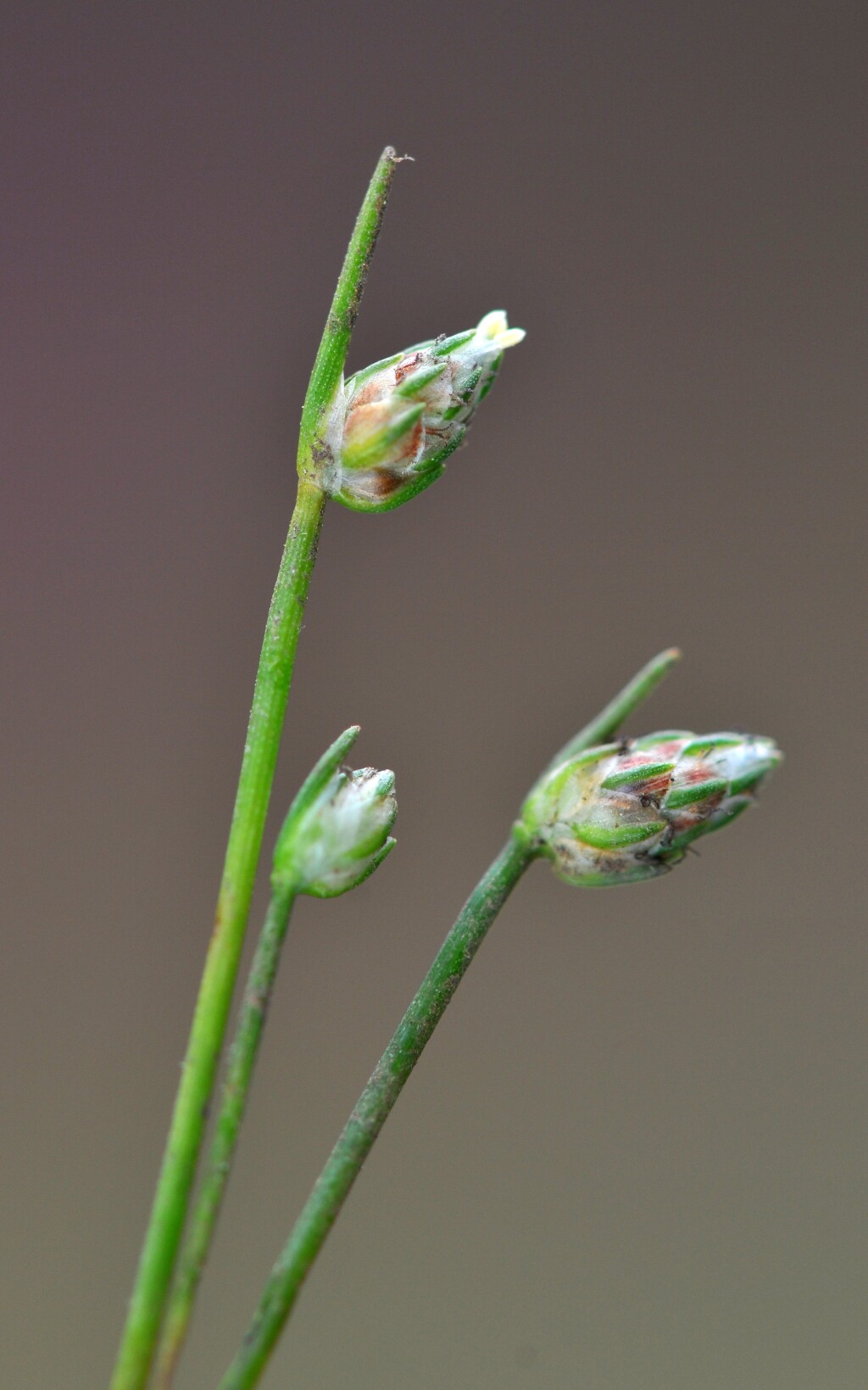Isolepis cernua
(Vahl) Roem. & Schult. Nodding Club-rushSmall tufted or clump-forming, rhizomatous perennial. Culms filiform, 2–20 cm high. Leaves reduced, or rarely blade to 4 cm long. Spikelet 1(–3), 2–6 mm long; involucral bract usually shortly exceeding spikelets, to 1 cm long; glumes obtuse, with sides ± conspicuously 2–6-nerved, straw-coloured to orange- or red-brown, 1–2 mm long; stamens 3; style 2- or 3-fid, sometimes a mixture on one plant. Nut unequally trigonous with the third angle usually obvious or sometimes slightly rounded, obovoid to broad-ellipsoid or broad-obovoid, with a minutely reticulate pattern of slightly raised glistening cells, yellow-brown, dark grey-brown to mid brown, from one-half to two-thirds as long as glume, 0.8–1 mm long, 0.5–0.8 mm diam. Flowers spring–summer.
LoM, MuM, Wim, GleP, Brid, VVP, VRiv, RobP, GipP, OtP, WaP, Gold, CVU, GGr, DunT, NIS, EGL, EGU, WPro, HSF, HNF, OtR, Strz, MonT, VAlp. Also WA, SA, Qld, NSW, ACT, Tas. Widespread, chiefly in cooler southern areas, often near the coast, but with disjunct occurrences at Wyperfeld National Park in the north-west and a few sites in the subalps (e.g. Baw Baws, Wulgulmerang area), usually in permanently moist sites, often somewhat brackish to subsaline.
A variable species that includes several forms over its world range. A distinctive form with broad culms, and with mostly at least 3 spikelets is apparently restricted to coastal sands. This entity appears to match the syntype of Scirpus arenarius Benth. (1878) nom.illeg., which is a replaced synonym of Scirpus psammophilus S.T.Blake. Muasya & Simpson (2002) treated S. psammophilus as a taxonomic synonym of Isolepis cernua var. setiformis (Benth.) Muasya, which however has a 2-fid style (3-fid in S. arenarius). Bentham described S. arenarius as having 2-fid styles, and it is so figured by Clarke (III. Cyper. tab. xlvii. figs. 1-2), however, Blake (1940) points out that the syntypes (from Wilson's Promontory) have 3-fid styles, though otherwise agreeing with Clarke's figure. Another entity with predominantly 2-fid styles may be referrable to Isolepis setiformis (S.T.Blake) K.L.Wilson. Blake explicitly described Scirpus setiformis as a new species, and did not base it on Bentham's variety. In Muasya & Simpson (2002), I. setiformis is distinguished from I. cernua by the number of style branches, with 2-fid styles in I. setiformis, 2-fid and 3-fid styles in I. cernua. However, it is currently unclear if this character is reliable, as plants with a mixture of 2-fid and 3-fid styles have been collected.
Close to Isolepis platycarpa (see note for that species).
Wilson, K.L. (1994). Cyperaceae. In: Walsh, N.G.; Entwisle, T.J., Flora of Victoria Vol. 2, Ferns and Allied Plants, Conifers and Monocotyledons, pp. 238–356. Inkata Press, Melbourne.
 Spinning
SpinningBlake, S.T. (1940). Notes on Australian Cyperaceae 4. *Proc. Roy. Soc. Queensland * 51: 177–182.
Muasya, A.M.; Simpson, D.A. (2002). A monograph of the genus Isolepis R.Br. (Cyperaceae). Kew Bulletin 57: 257–362.




